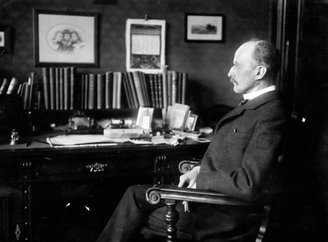Scientists from Khon Kaen University in Thailand and Nanjing University of Science and Technology in China recently announced that they have discovered what could be taken into account. The “holy grail” of modern physics: an equation that promises to connect the cosmic world to the quantum world.
The mathematical framework, published in the journal Astroplarticle Physics, is the first to prove that Einstein’s theory of general relativity, which describes the universe on a large scale, is compatible with quantum mechanics, which describes the behavior of matter at subatomic scales.
The new formalism, commonly referred to as the “Theory of Everything,” practically combines the sciences that govern the macroscopic world with those of the microscopic world. This means explaining different physical phenomena. From the hypothetical dark matter that makes up 26.8% of the universe to the logic of photons emitted by a mobile phone.
Incompatibilities between general relativity and quantum physics
One example of the significant challenges of bridging the two theories is how Einstein described gravity in his theory of general relativity. Rather than conceiving of gravity as a force of attraction between objects, the German physicist explained it as a result of the way massive objects, such as planets and stars, distort space-time.
This curvature causes other objects to follow curved orbits, meaning that what we perceive as the effect of gravity is actually the motion of these objects through space-time being distorted by the massive masses around them. Therefore, the greater the mass of the object, the greater the curvature of space-time around it.
The disagreement between the theories arises when we try to reconcile this geometric and continuous view of space-time with the fragmentary and probabilistic nature of quantum physics. An example of this is black holes. Unlike Einstein’s theory, quantum mechanics suggests that information falling into this region of space cannot be destroyed, creating a contradiction with general relativity known as the information paradox.
How can quantum physics be reconciled with Einstein’s general relativity?

The need to reconcile the two most important theories in physics to achieve a complete understanding of the universe at all scales led researchers to create an unprecedented mathematical structure. “Redefined the mass and charge of leptons” [partículas fundamentais] “in terms of interactions between the energy of the field and the curvature of space-time”.
In this approach, the mass and charge of leptons are no longer seen as fixed and isolated properties, but are reinterpreted as a result of interactions between the energy of quantum fields and the curvature of spacetime. In other words, these properties are now seen as dynamical, but affected by gravity and the curvature of spacetime on quantum scales.
“The resulting equation is covariant in space-time and invariant with respect to any Planck scale,” the study says. This means that The equation is universally applicable because it combines the concepts of relativity (covariance in space-time) with those of quantum physics. (Board scale invariance).
The results of the new equation

When the authors state in their explanation of the new equation that it is a “space-time covariate” This means that it retains its mathematical form, even if the coordinates changeThis is guaranteed through the use of so-called Riemannian geometry, an area of mathematics that describes the curvature of space-time resulting from the presence of mass and energy in general relativity.
On the other hand, saying that the equation remains “invariant to any Planck scale” means that it still remains valid. the scale on which events occur, from the microscopic scale to the largest cosmological scales. In this context, The Planck scale provides the fundamental values for length, time, and energy in quantum physics and relativity, based on universal constants..
Applying the equation to the world we live in, the authors conclude that as the Universe expands, the curvature of space-time decreases, creating new forms of mass and energy. However, at some point, this expansion reaches a point where the expansion stops, leading to a steady state or further changes in the rate of expansion.
Follow the latest developments in quantum physics and science on TecMundo. Or take the opportunity to understand what the Many Worlds interpretation of quantum mechanics is. Until later!
Source: Tec Mundo
I’m Blaine Morgan, an experienced journalist and writer with over 8 years of experience in the tech industry. My expertise lies in writing about technology news and trends, covering everything from cutting-edge gadgets to emerging software developments. I’ve written for several leading publications including Gadget Onus where I am an author.













